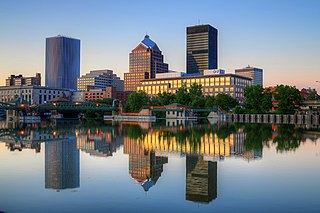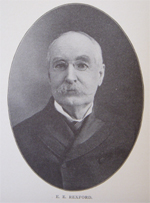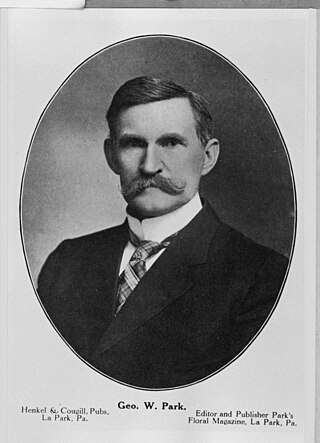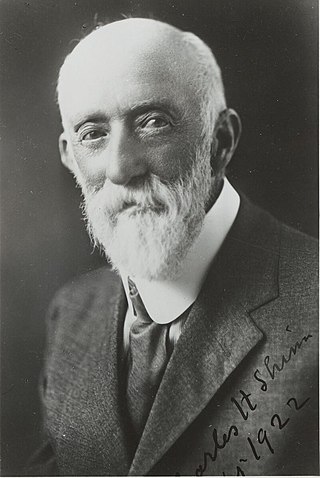
The University of Rochester is a private research university in Rochester, New York, United States. It enrolls approximately 6,800 undergraduates and 5,000 graduate students. It was founded in 1850 and moved into its current campus, next to the Genesee River in 1955. With approximately 30,000 full-time employees, the university is the largest private employer in Upstate New York and the 7th largest in all of New York State.

Rochester is a city in the U.S. state of New York and the seat of Monroe County. It is the fourth-most populous city and 10th most-populated municipality in New York, with a population of 211,328 at the 2020 census. The city forms the core of the larger Rochester metropolitan area in Western New York, with a population of over 1.09 million residents. Throughout its history, Rochester has acquired several nicknames based on local industries; it has been known as "the Flour City" and "the Flower City" for its dual role in flour production and floriculture, and as the “Imaging Capital of the World" for its association with film and still photography.

John Fletcher Steele was an American landscape architect credited with designing and creating over 700 gardens from 1915 to the time of his death.

Guerrilla gardening is the act of gardening – raising food, plants, or flowers – on land that the gardeners do not have the legal rights to cultivate, such as abandoned sites, areas that are not being cared for, or private property. It encompasses a diverse range of people and motivations, ranging from gardeners who spill over their legal boundaries to gardeners with a political purpose, who seek to provoke change by using guerrilla gardening as a form of protest or direct action. This practice has implications for land rights and land reform; aiming to promote re-consideration of land ownership in order to assign a new purpose or reclaim land that is perceived to be in neglect or misused. Some gardeners work at night, in relative secrecy, in an effort to make the area more useful or attractive, while others garden during the day for publicity.
Amateur Gardening is a British fornightly magazine dedicated to gardening. It included news, advice, feature articles, and celebrity columns and interviews.

The Loddiges family managed one of the most notable of the eighteenth and nineteenth century plant nurseries that traded in and introduced exotic plants, trees, shrubs, ferns, palms and orchids into European gardens.

Eben Eugene Rexford was an American writer and poet, and author of lyrics to popular and gospel songs.
William Baylor Hartland (1836–1912) was a plantsman from Ireland.

George Watt Park was an American businessman who founded the Geo. W. Park Seed Company, Inc., now known as Park Seed Company.
Park Seed Company is an American mail-order and eCommerce seed company based in Greenwood, South Carolina founded in 1868. Park Seed specializes in garden seeds, offering more than 1,100 varieties of flower, vegetable, and herb seeds, plus a large selection of bulbs, live plants, and gardening accessories. Park Seed Company distributes millions of catalogs every year and maintains an online retail presence. Park Seed is a division of Jackson & Perkins Park Acquisitions, which is a subsidiary of publicly traded Western Capital Resources.
William Beatty Rochester was an American lawyer and politician from New York.

Amy Goldman Fowler is an American billionaire heiress, gardener, author, artist, philanthropist, and advocate for seed saving and heirloom fruits and vegetables. She is one of the foremost heirloom plant conservationists in the US. Goldman has been called "perhaps the world's premier vegetable gardener" by Gregory Long, president emeritus of The New York Botanical Garden.
Bernard McMahon or M'Mahon was an Irish-American horticulturist settled in Philadelphia, who served as one of the stewards of the plant collections from the Lewis and Clark Expedition and was the author of The American Gardener's Calendar: Adapted to the Climates and Seasons of the United States. He circulated the first extensive gardener's seed list in the United States, which he attached as an appendix to his Calendar. McMahon's most enduring contribution was his Calendar, the most comprehensive gardening book published in the United States in the first half of the nineteenth century. It finished in its eleventh edition in 1857. It was modeled on a traditional English formula, of month-by-month instructions on planting, pruning, and soil preparation for the "Kitchen Garden, Fruit Garden, Orchard, Vineyard, Nursery, Pleasure Ground, Flower Garden, Green House, Hot house and Forcing Frames". In some particulars, McMahon followed his English models so closely that J. C. Loudon suggested in 1826 that the derivative character of the Calendar was such that "We cannot gather from the work any thing as to the extent of American practice in these particulars." Ann Leighton notes the absence of Indian corn among the "Seeds of Esculent Vegetables" in 1806, though he lists old-fashioned favorites like coriander, corn-salad, orach, rampion, rocambole and skirret.

Rossiter Johnson was an American author and editor. He edited several encyclopedias, dictionaries, and books, and was one of the first editors to publish "pocket" editions of the classics. He was also an author of histories, novels, and poetry. Among his best known works was Phaeton Rogers, a novel of boyhood in Rochester, New York, where Johnson was born.

Lee and Kennedy were two families of prominent Scottish nurserymen in partnership for three generations at the Vineyard Nursery in Hammersmith, west of London. "For many years," wrote John Claudius Loudon in 1854, "this nursery was deservedly considered the first in the world."

James Shirley Hibberd was one of the most popular and successful gardening writers of the Victorian era. He was a best-selling editor of three gardening magazines, including Amateur Gardening, the only 19th-century gardening magazine still being published today. He wrote over a dozen books on gardening and several more on natural history and related subjects. He promoted town gardening, aquariums, bee-keeping, vegetarianism, water recycling, environmental conservation and the prevention of cruelty to animals and birds, all before they were taken up as 'causes' in the twentieth century. Most important of all, he taught and promoted amateur gardening, before it was acceptable among the gardening establishment, and helped to found the whole consumer industry in amateur gardening that we have today.
Alfred D. Robinson (1866–1942) and his wife Marion James Robinson (1873–1919) were wealthy residents of San Diego, California known for their impact on gardening and the cultivation of flowers, particularly begonias. Their extensive home garden was used to propagate and develop more than 100 new varieties of ornamental flowers and was later opened to the public as Rosecroft Begonia Gardens. Rosecroft was the name of their estate in the Point Loma neighborhood of San Diego. The residence, built for them in 1912, is now listed on the National Register of Historic Places.
James Mangles was an officer of the Royal Navy, naturalist, horticulturalist and writer. He served during the French Revolutionary and Napoleonic Wars, rising to the rank of captain. In the post-war period, with his brothers Robert and George, who shared his interests in horticulture, botany and plant collection, James was actively involved in the botanical, horticultural and commercial life of early colonial Western Australia.

Sarah James Eddy was an American artist and photographer who specialized in the platinotype process, also known as platinum prints. She was active in abolition, reform, and suffragist movements, and was a philanthropist as well as instrumental in the founding of the Rhode Island Humane Society. She was inducted into the Rhode Island Heritage Hall of Fame in 2017.

Charles Howard Shinn (1852–1924) was a horticulturalist, author, inspector of California Experiment Stations, and forest ranger in California.















